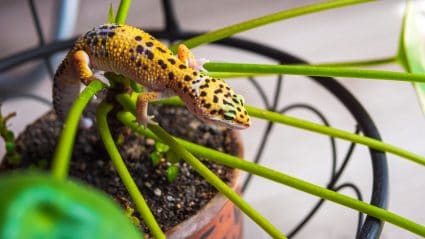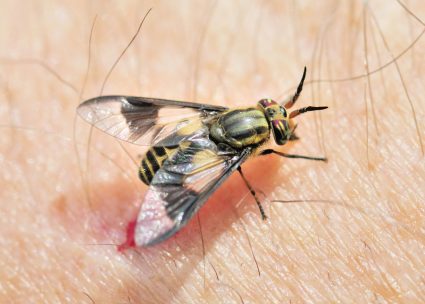
Starting a vegetable garden is a rewarding experience, but it can also be challenging, especially when bugs decide to make your garden their home. Fortunately, there are natural ways to keep pests at bay without resorting to harmful chemicals. Here’s an all-in-one guide to help you keep your garden healthy and bug-free.
To keep bugs out of your vegetable garden naturally, you can use methods such as companion planting, natural sprays, attracting beneficial insects, using diatomaceous earth, crop rotation, physical barriers, hand-picking, biological control, weed management, and maintaining plant health. Certain plants like mint, basil, lavender, and marigolds can also deter pests. Regular maintenance and care of your garden is crucial to ensure these methods remain effective.
Understanding the Common Pests
Before you can effectively protect your garden from pests, you need to know what you’re dealing with. Some of the most common pests that infest vegetable gardens include aphids, cabbage worms, squash bugs, Colorado potato beetles, cutworms, flea beetles, Japanese beetles, Mexican bean beetles, whiteflies, and tomato hornworms. These pests can cause a variety of issues, from deformed leaves and reduced yields to plant death.
Natural Methods to Keep Bugs Out
Companion Planting
Companion planting is a method of growing certain plants together for mutual benefit. For example, marigolds can repel nematodes and other pests, while basil planted near tomatoes can deter tomato hornworms. Other effective combinations include planting nasturtiums to repel aphids and chives to deter carrot flies.
Natural Sprays
Homemade sprays made from ingredients like garlic, neem oil, or soap can deter pests. For example, a spray made from a mixture of one tablespoon of canola oil and a few drops of dish soap in a quart of water can deter aphids, beetles, whiteflies, and other pests.
Beneficial Insects
Attracting beneficial insects like ladybugs, green lacewings, and praying mantids to your garden can help control harmful pests. These good bugs prey on the bad ones, helping to keep their populations in check. You can attract them by planting flowers and herbs that they like.
Diatomaceous Earth
Diatomaceous earth is a natural powder made from tiny fossilized aquatic organisms called diatoms. When pests come into contact with it, it can kill them by dehydrating them.
Crop Rotation
Crop rotation is a method of changing the location of your crops each year. This can prevent pests that overwinter in the soil from re-infesting the same plants year after year.
Physical Barriers
Physical barriers like floating row covers can protect your plants from pests. These covers are made from lightweight fabric that allows sunlight and water to reach the plants but keeps pests out.
Hand-Picking
If you have a small garden, hand-picking pests off your plants can be an effective method of control. This works well for larger pests like beetles, cabbage worms, and squash bugs.
Biological Control
Introducing beneficial nematodes or other natural predators to your garden can help control pests. These organisms prey on pests, helping to reduce their populations.
Weed Management
Keeping your garden area free of debris and weeds can help prevent pests. These areas can provide breeding grounds for insects, so keeping your garden clean can help keep pests at bay.
Maintaining Plant Health
Healthy plants are less susceptible to pests. Make sure your plants have the proper nutrients, water, and sunlight to keep them strong.
Plants That Naturally Deter Pests
Certain plants and herbs can deter pests naturally. For example, mint, basil, lavender, chives, rosemary, citronella grass, lemongrass, marigolds, chrysanthemums, petunias, bay leaf, dill, thyme, sage, garlic, hyssop, lemon balm, sunflowers, and bee balm can all help keep pests away from your garden.
Maintenance and Care
To ensure these natural methods remain effective, you need to properly maintain your garden. This includes regular weeding, proper watering, and checking your plants regularly for signs of pests. If you notice pests, act quickly to control them before they can cause significant damage.
Remember, no method is 100% effective, and you may still see some pests in your garden. However, by using these natural methods, you can significantly reduce the number of pests and keep your garden healthy and productive.
In conclusion, while bugs can pose a challenge to vegetable gardening, there are many natural methods available to keep them at bay. By understanding the types of bugs that can infest your garden and implementing these methods, you can enjoy a bountiful harvest without resorting to harmful chemicals. Happy gardening!
Frequently Asked Questions
What other insects can be beneficial for my garden?
Other beneficial insects include spiders, ground beetles, hoverflies, parasitic wasps, and tachinid flies. These insects prey on harmful pests, helping to keep their populations in check.
Can I use any type of soap for the natural spray?
It’s best to use a mild, non-detergent, and non-degreaser soap for the natural spray. Avoid soaps with strong scents, as they could harm your plants.
How often should I apply diatomaceous earth in my garden?
Diatomaceous earth should be applied as needed, typically once or twice a week. However, you may need to reapply after heavy rain, as it can wash away.
How do I introduce beneficial nematodes to my garden?
Beneficial nematodes can be introduced to your garden through a water suspension. You can purchase them online or from a garden center, and then mix them with water and spray or sprinkle onto the soil.
What time of day is best for hand-picking pests?
The best time for hand-picking pests is early in the morning or late in the evening, as many pests are less active during these times.
How can I tell if my plants are healthy?
Healthy plants typically have vibrant, uniform color and strong, sturdy stems. They should also have a good growth rate and produce flowers or fruits as expected. Signs of unhealthy plants can include discoloration, wilting, stunted growth, or the presence of pests.
How do I properly rotate my crops?
When rotating your crops, avoid planting the same type of vegetable in the same spot for at least three years. This can help break the life cycle of pests and diseases that may be lingering in the soil. Try to group crops by family, as they tend to have similar nutrient needs and pests.
What are some signs that pests are damaging my plants?
Signs of pest damage can vary depending on the pest, but some common signs include chewed leaves or stems, discoloration, stunted growth, wilting, and the presence of the pests themselves or their eggs.








